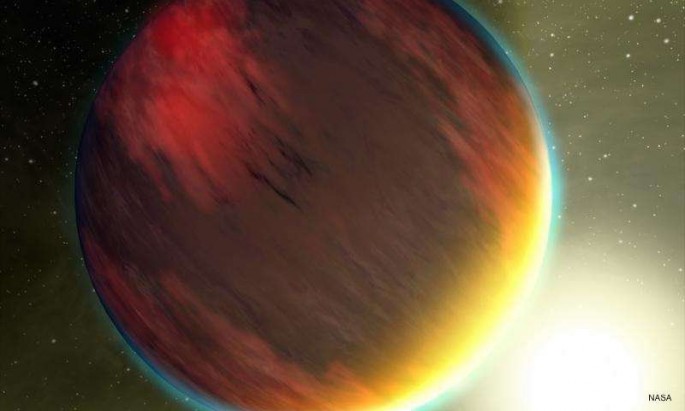Scientists claim to have found the answer to one of the of the most intriguing mysteries surrounding so-called "hot Jupiter" planets and where the water within them might have gone.
According to scientists from the University of California (UC) in the United States and the University of Exeter, water is, in fact, present in these planets, but they are hidden by the clouds in these planets' atmospheres.
Hot Jupiters are a class of exoplanets (planets found outside the solar system) are gas giants that orbit closely around their host stars, completing a revolution in a matter of days or even hours. Around 1 percent of the exoplanets that have been discovered by astronomers in the last two decades are of this category.
During the initial study of such planets, scientists have observed that, while many of these have strong signs of water, some do not. The findings perplexed scientists, with some theorizing that the "drier" worlds formed with less water in their atmospheres, which UC researcher and study co-author Jonathan Fortney said would mean they have to reevaluate their current theories on planet formation, Space reported.
To solve the mystery, Fortney and his team, led by University of Exeter's David Sing, studied ten different hot Jupiter exoplanets using NASA's Hubble and Spitzer space telescopes. The researchers compared the visible light spectrum data of the planets collected from Hubble with their respective infrared spectrum from Spitzer.
They found that some of the planets look larger under visible light observation and smaller when viewed in infrared. The team concluded that the difference is due to the presence of clouds on these planets, explaining that visible light coming from the parent star is not able to penetrate the cloud cover and instead bounce off from a planet's atmosphere, while infrared is able to penetrate deeper, making a planet appear smaller. The larger the apparent size discrepancy between the visible light and infrared spectrum, the thicker cloud cover.
The scientists discovered that the planets with thicker clouds are also the ones that appear to have less water in them, with those that have clearer skies also showing more water. From there, they arrived at the conclusion that the cloud cover might be obscuring the water from view. Their findings were published in the scientific journal nature.
According to Sing, they are still not sure how the clouds exactly obscure these planets' waters. However, he said that their atmospheres are likely to contain small mineral particles like that of silicates and corundum, Mail Online reported. Fortney added that this would indicate that the planets have very exotic atmospheres.
The researchers said that the next step is to measure the actual amount of water present in these planets, with greater precision. They will then compare it with the measured amount of oxygen present in the parent star. This will help them determine if the chemical composition of their host stars are directly related to the makeup of these planets.
The results of that next study will help astronomers in their search for potentially habitable planets in other stars.



























